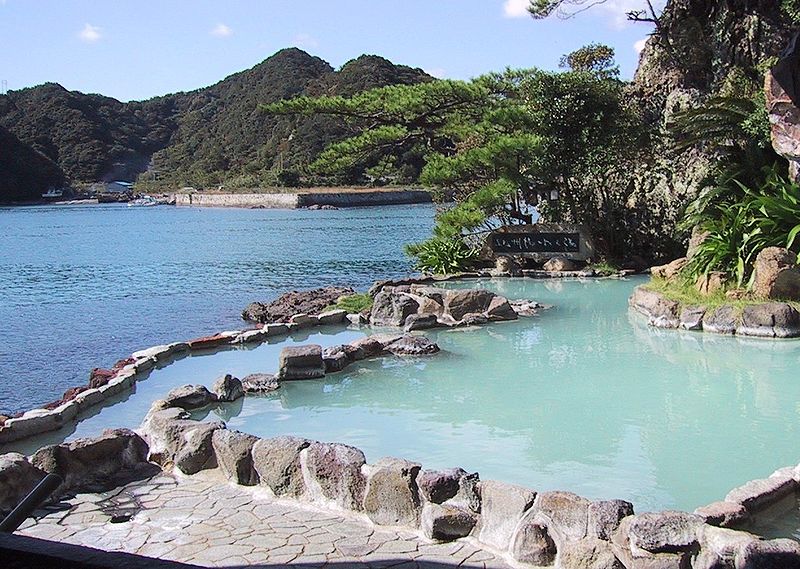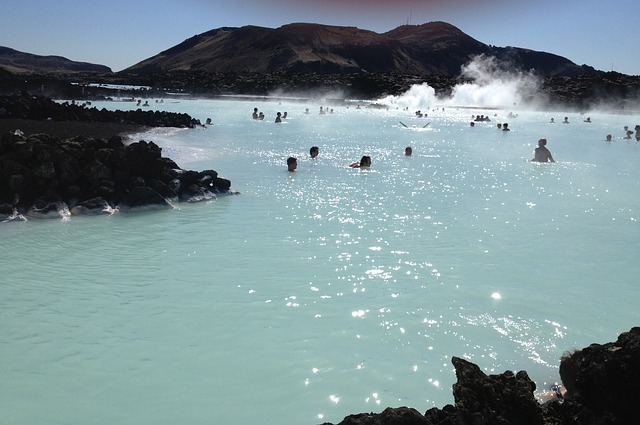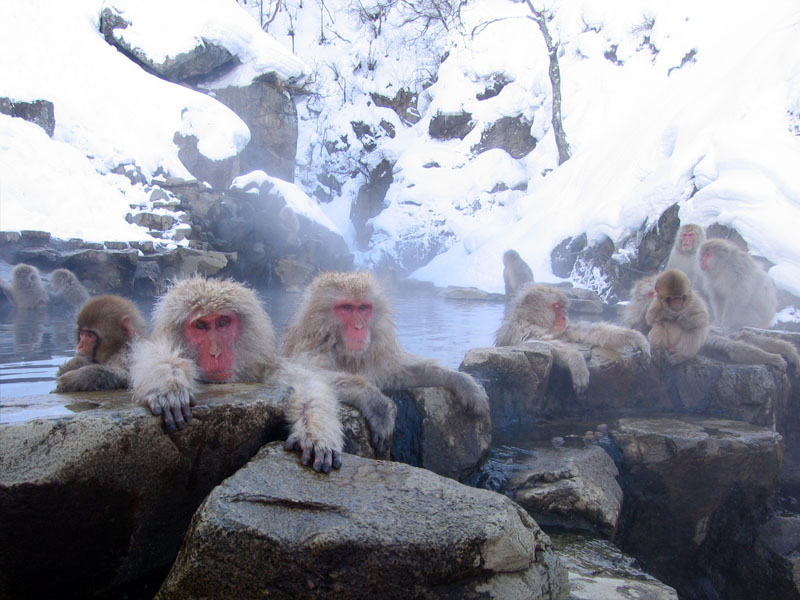The inspiration for the hot tub is undoubtedly the natural hot spring. From time immemorial mankind has been soaking in hot springs for pleasure, for good health, and for religious reasons. It's no wonder that so many people want one located just outside their back door.
What, Exactly, is a Hot Spring?
Hot springs are created when geothermally heated groundwater seeps up from the Earth's crust. Geothermal heat is heat from the Earth's mantle: in general, the temperature of rocks in the earth increases the deeper you go. In non-volcanic areas, if water is deep enough in the crust it becomes heated by the rocks. Any that seeps up to the surface creates a hot spring. In volcanic areas, water may be heated when it comes into contact with molten rock. If it boils and builds up steam pressure, it erupts at the surface and we called it a geyser.
What's So Hot About Hot Springs?
Besides the obvious benefits for relaxation and cleanliness, people around the world and throughout history have believed that bathing in hot springs has therapeutic benefits. Here are just a few:
- Blood circulation and cell oxygenation is increased, which helps dissolve and eliminate toxins from the body.
- The body's temperature is increased, killing germs and viruses on and in the body.
- Bathing repeatedly over a period of 3-4 weeks can normalize endocrine gland functions and autonomic nervous system function.
- It increases metabolism and stimulates secretions in the intestinal tract and liver, which aids digestion.
- It increases oxygen-rich blood flow throughout the body, which improves nourishment to vital organs and tissues.
- Mineral springs have high amounts of negative ions, which encourage feelings of well-being physically and psychologically.
- The body absorbs trace amounts of minerals such as carbon dioxide, lithium, sulfure, magnesium, and calcium. This provides healing to various organs, stimulates and enhances the immune system, encourages physical and mental relaxation, produces endorphins, and normalizes gland functions.
- It improves joint mobility.
- It can improve quality of sleep and can reduce incidents of insomnia.
- It can lower blood pressure.
- If the water is mineralized (especially if with sulfur), it can improve the effects of skin diseases such as psoriasis, dermatitis, and fungal infections.
Where Can I Find a Hot Spring?
Hot springs can be found all over the world, but tend to be clustered around fault lines and areas of volcanic activity. For example, in the United States the majority of hot springs are located in the West. Check tourist websites for hot springs in your country. In the US, hot spring guides for every state are readily available on the Internet. Many springs are developed, while others are quite raw and natural. Some are on well-traveled tourist paths; others are only accessible to hikers.
Some countries are famous for their hot springs, and some hot springs are more famous than others. Japan, the United States, Taiwan, and China (Pacific Rim countries) are particularly noted for their hot springs. However, some remarkable springs are located in Costa Rica, Iceland, and Iran.
Here are a few remarkable springs:
- Budapest, Hungary--The area under the city is rich with springs, feeding more than 50 public baths and pools, private spas, and even drinking fountains.
- The Nine Hells of Beppu, Japan--These remarkable springs are very distinct from each other, and each has a unique name. For example, the White Pond Hell has water colored white by excess calcium. The most famous and photogenic is Blood Pond Hell, with waters colored red by ferrous minerals seeping up from the bottom of the pond.
- Bath, England--Springs in this area of England have been in use as far back as 8000 BC. The Romans first constructed baths there in the first century.
- Lake Hévíz, Hévíz, Hungary--This is the second largest thermal lake in the world, and it is believed that the waters of the lake are completely replenished each day.
- Saturnia, Tuscany, Italy--This sulfurous spring features natural pools cut into the rock and a waterfall of hot water.
Hot Spring Bathing Etiquette
There are no firm rules on how to bathe in hot springs--they will vary greatly from area to area and by type of hot spring. Developed springs and private springs will generally have posted rules. Springs located in out-of-the way places accessible only by hikers will have no official rules, but there are still some basic manners you should practice to ensure the springs can be enjoyed by everyone.
Some "rules" for bathing in hot springs:
- Follow any posted rules.
- Shower prior to entering the spring. This helps maintain the cleanliness of the water.
- Do not use springs during your menstrual cycle.
- Do not soak for too long--about 30 minutes is a good limit. This ensures you do not become faint and risk injury or death. At smaller springs, it also ensures that everyone gets time in the spring. It's also advisable not to soak more than 3 times a day.
- Avoid bathing 30 minutes prior to eating and for 1 hour after eating.
- Before entering the water, test the temperature with a finger or toe to ensure it is not too hot. People have died from accidentally or purposefully entering boiling springs.
- Hydrate before and after bathing. Sports drinks or water are best.
- Do not drink alcohol while bathing! This can lead to injury or death.
- Do not allow pets to enter the hot springs. This is for the safety of the animal, as well as to keep the spring clean.
- If sharing a spring with others, refrain from too much conversation so everyone can relax.
- Be aware of clothing rules for the particular spring--some springs require nudity, others require bathing suits. For secluded springs in the wilderness, use your own discretion based on likely traffic in the area and your own comfort.
- Speaking of clothing, if wearing a suit be aware that any detergents used to clean the suit will transfer to the spring water. It's a good idea to have a suit specifically for the spring that has only been rinsed in water and not washed with soap. Simply wring out and air dry when finished.
- Pregnant women and individuals should not use hot springs.
- Avoid getting spring water in your eyes, nose, or mouth (unless it is a spring specifically designated for drinking). Many types of organisms survive in the hot waters and can cause diseases such as meningitis and Legionnaires' if they enter the body.
- If at a spring in a remote location, set up your camp at least 200 feet away to avoid contaminating the water.
- Avoid engaging in adult situations in the hot spring. This is for the comfort of other bathers, to maintain spring cleanliness, and to avoid becoming infected with any viruses or bacteria living in the water.
Share Your Hot Spring Experiences!
Do you visit hot springs? Tell us your favorite bathing spots! Did using natural hot springs inspire you to purchase a hot tub? Share your hot spring stories with us in the comments below!












